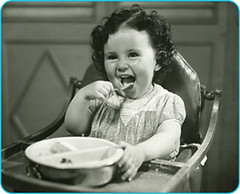When Presley was about two we had an evaluation with the “feeding clinic” here in Richmond at the Richmond Children’s Hospital. We ended up not perusing the feeding clinic for various reasons, but recently have decided to give it a go again.
I fed Presley a meal yesterday of mashed green-beans, small toddler spaghettis and mashed bananas. She tongue mashed some of her food, while swallowing other’s whole. Her OT was here yesterday and “mentioned” she eats at a 9 month old level, because she hasn’t picked up the older skill of moving her tongue around to her teeth.
The feeding clinic here goes the behavior rout when it comes to therapy. They tend to use ABA (applied behavioral analysis) when feeding. They work on a reward system. You take a bite, you get a toy. Studies show that feeding disorders are usually prevalent with neurologic disorders as well as behavioral issues.
With that being said, Presley’s issue consists mostly of texture based foods. She prefers soft foods and will not eat anything hard. Hard foods would be considered, crackers, cheese, anything crunchy. In applying behavioral therapy to texture issues, “the procedure consists of presenting light and rocking motion and increasing the texture over time.”
One of the most important things in feeding therapy is parent training. In the intensive program at the feeding clinic, the parent/child goes five days a week for eight hours a day for six consecutive weeks and eats four times. The parent watches on video for the first couple of weeks, while the occupational therapist feeds the child, then the last couple of weeks the parent is “taught” and feeds the child in the clinic setting, so that therapist can observe and correct.
Most studies show that feeding therapy at clinical locations is favorable.
Shore, B. P. C. (1997). Pediatric feeding disorders. The Kennedy Krieger institute. Retrieved February 3, 2010 from, http://feedingdisorders.kennedykrieger.org/pdf/Piazza_Shore.pdf.
Wednesday, February 3, 2010
Subscribe to:
Post Comments (Atom)


No comments:
Post a Comment